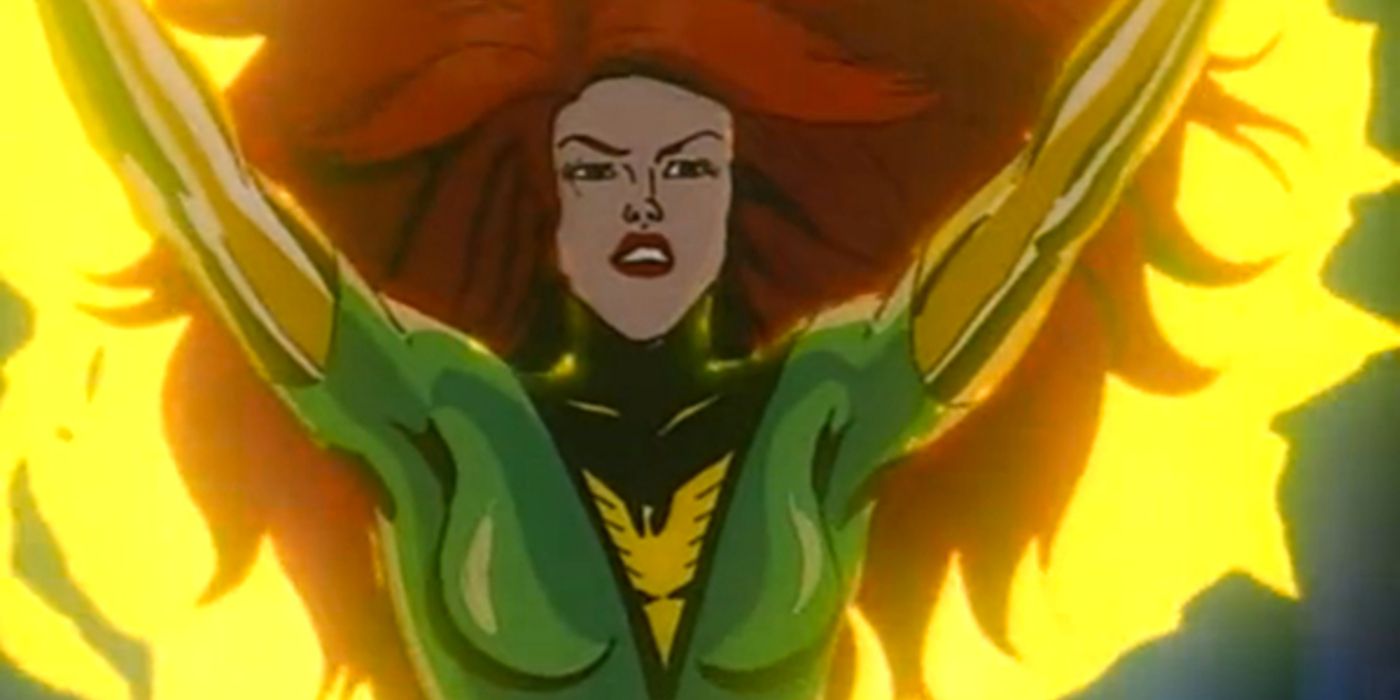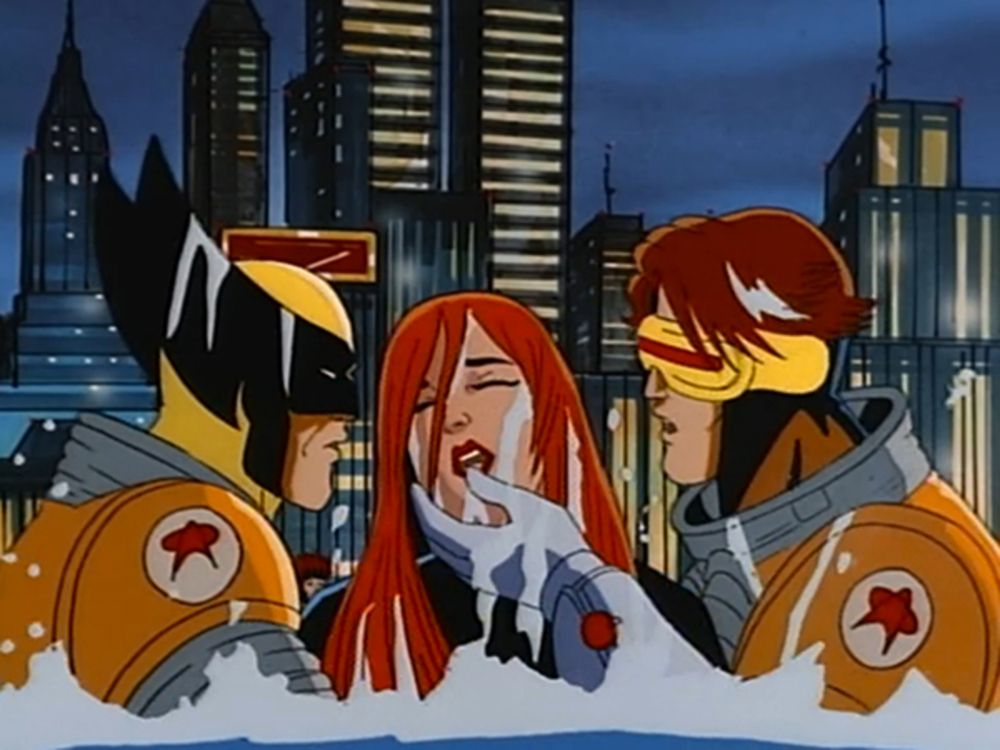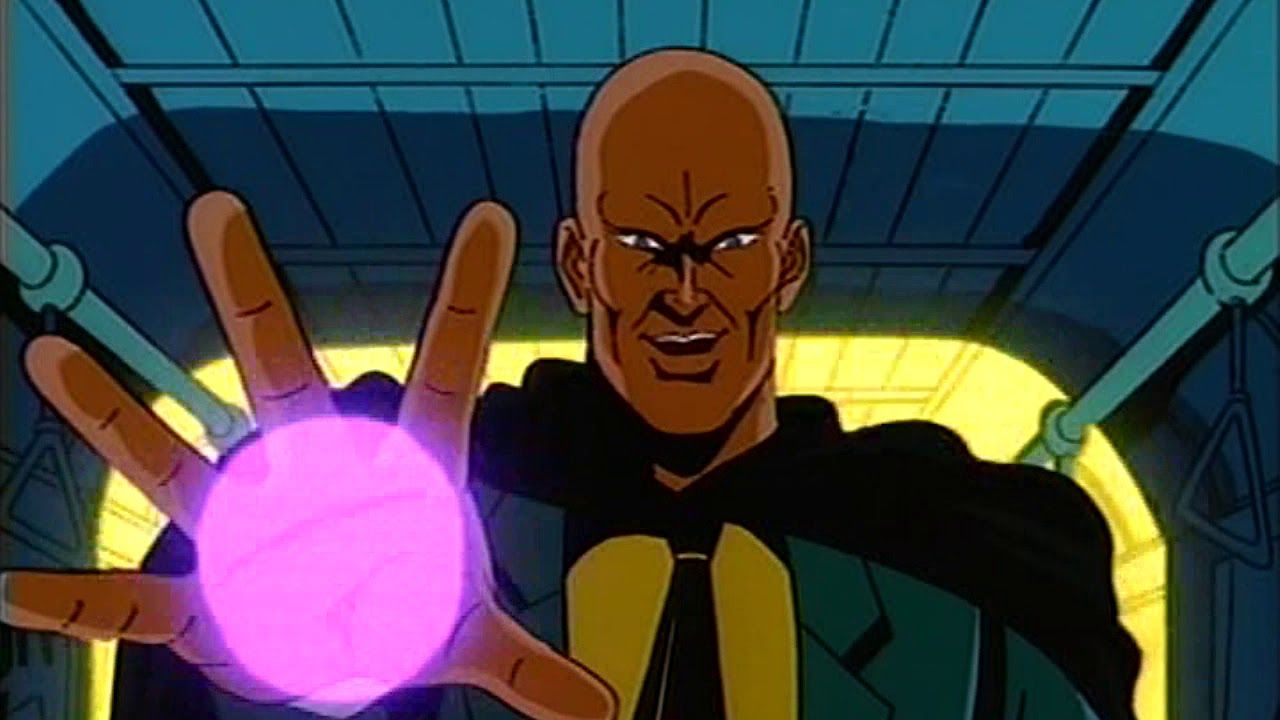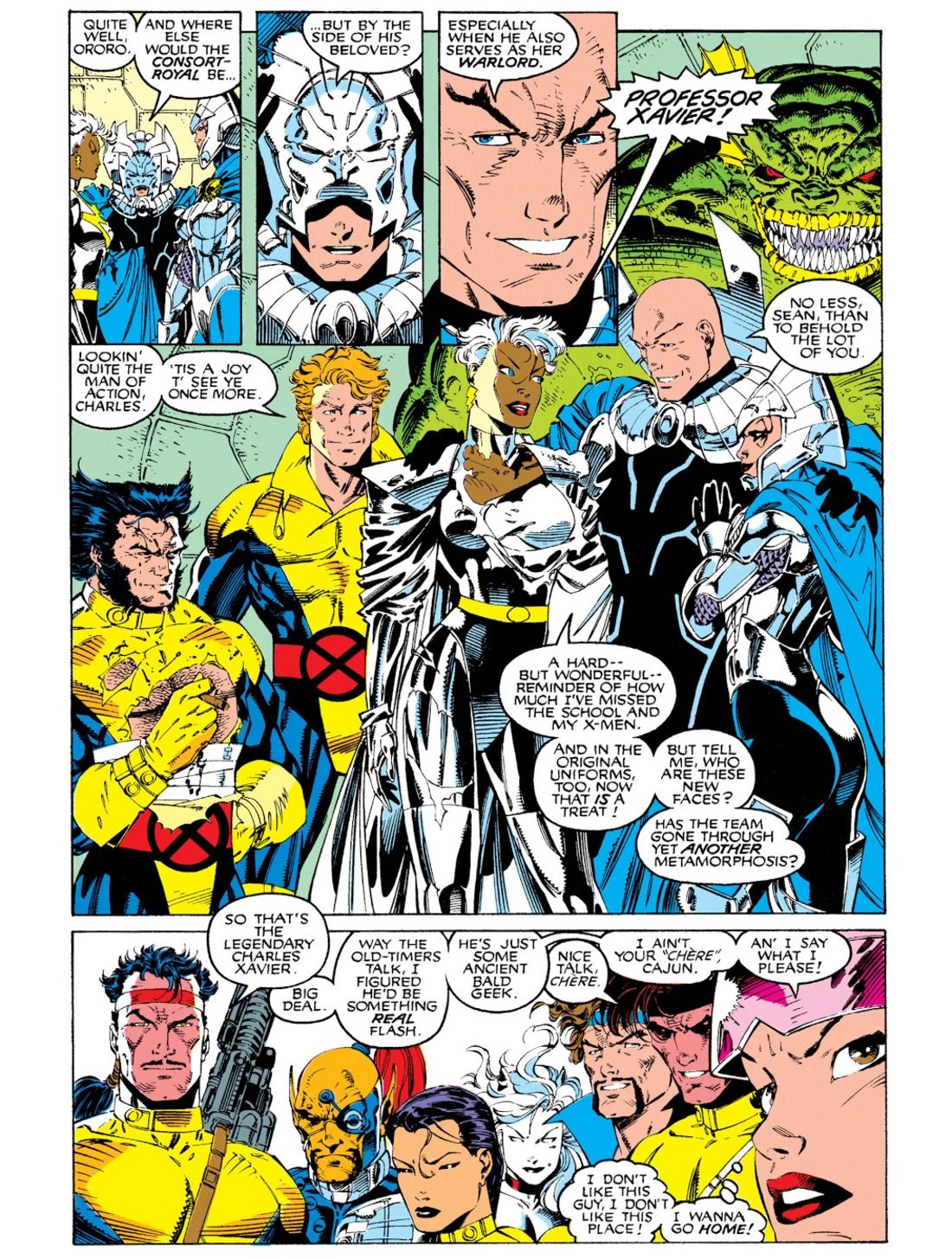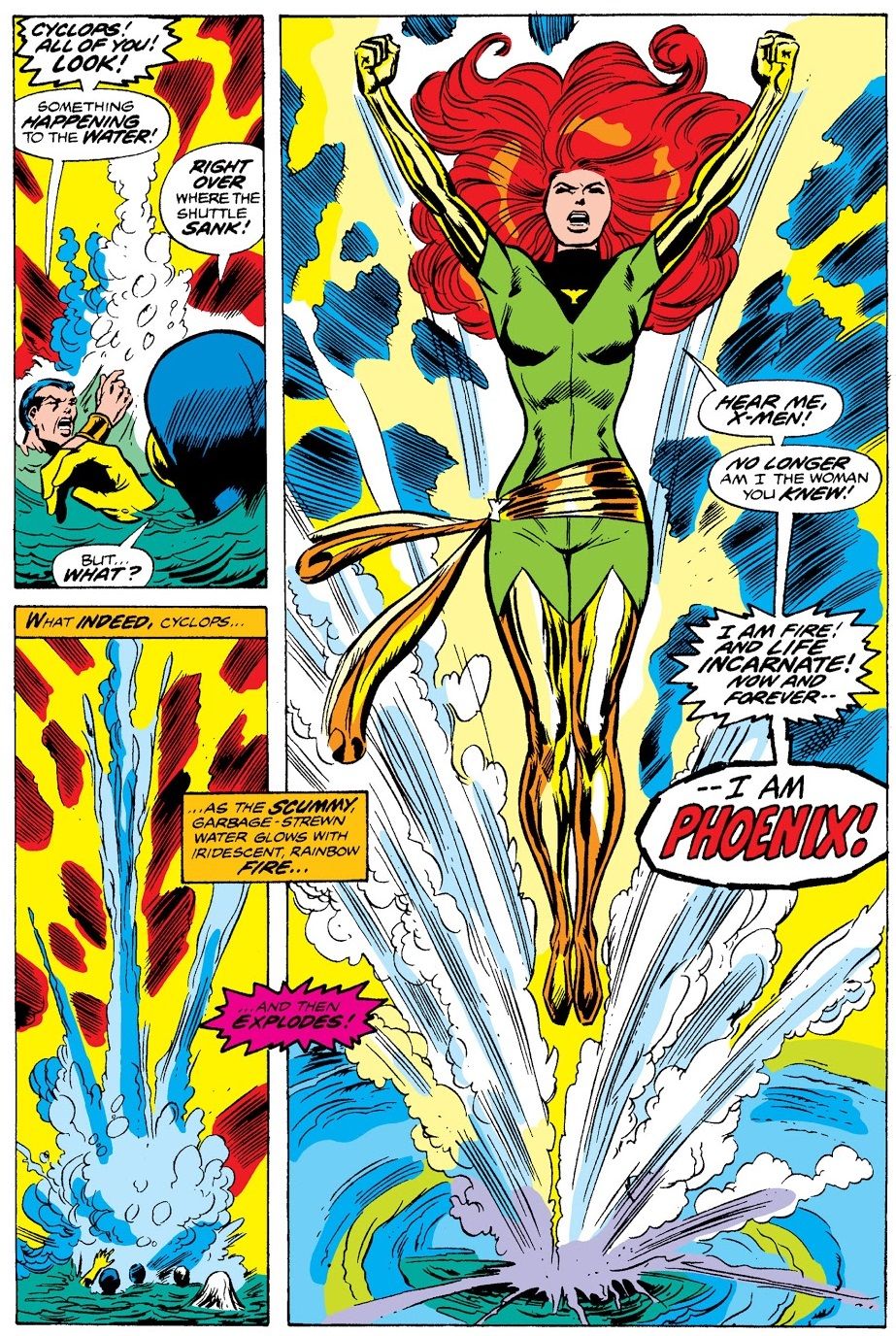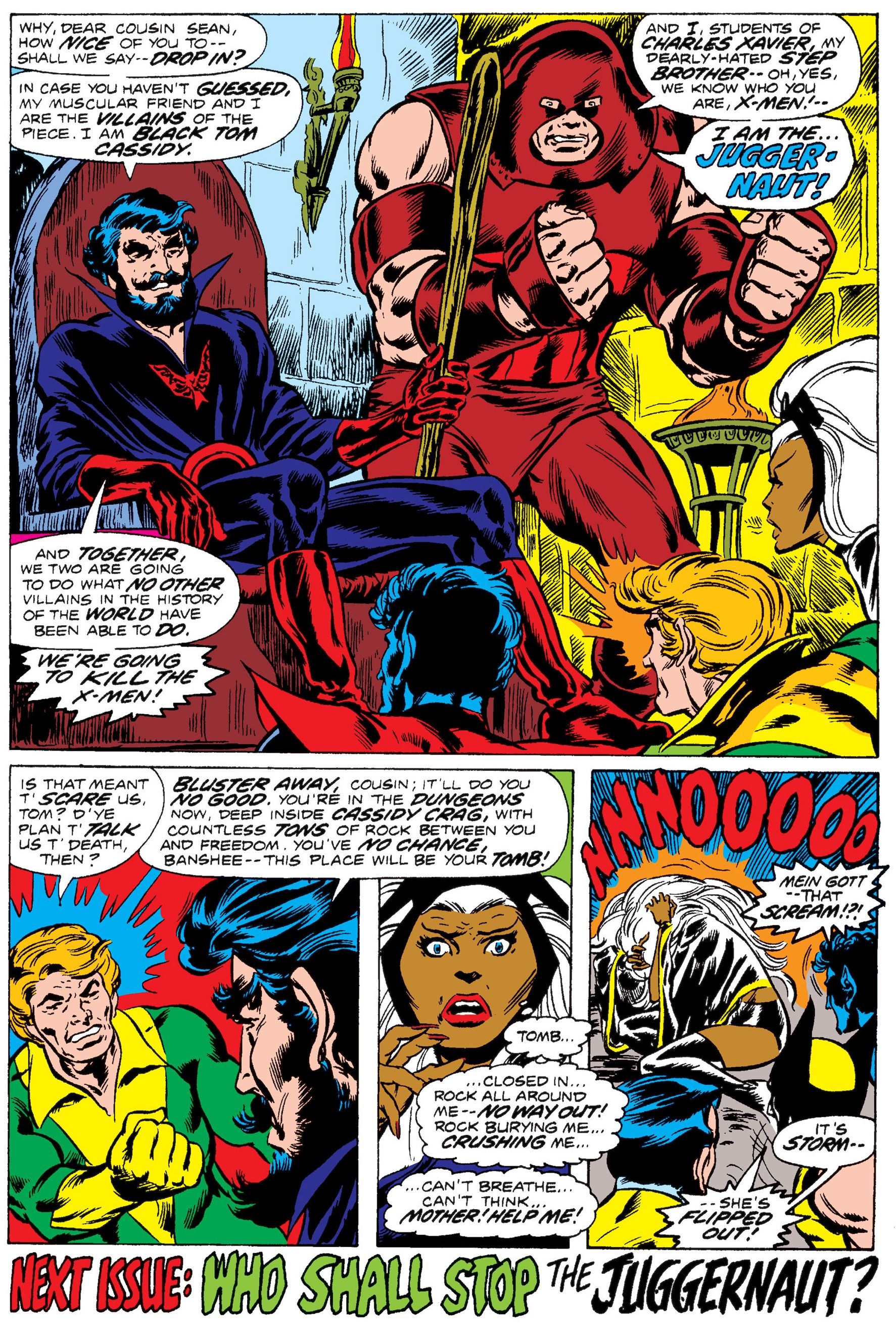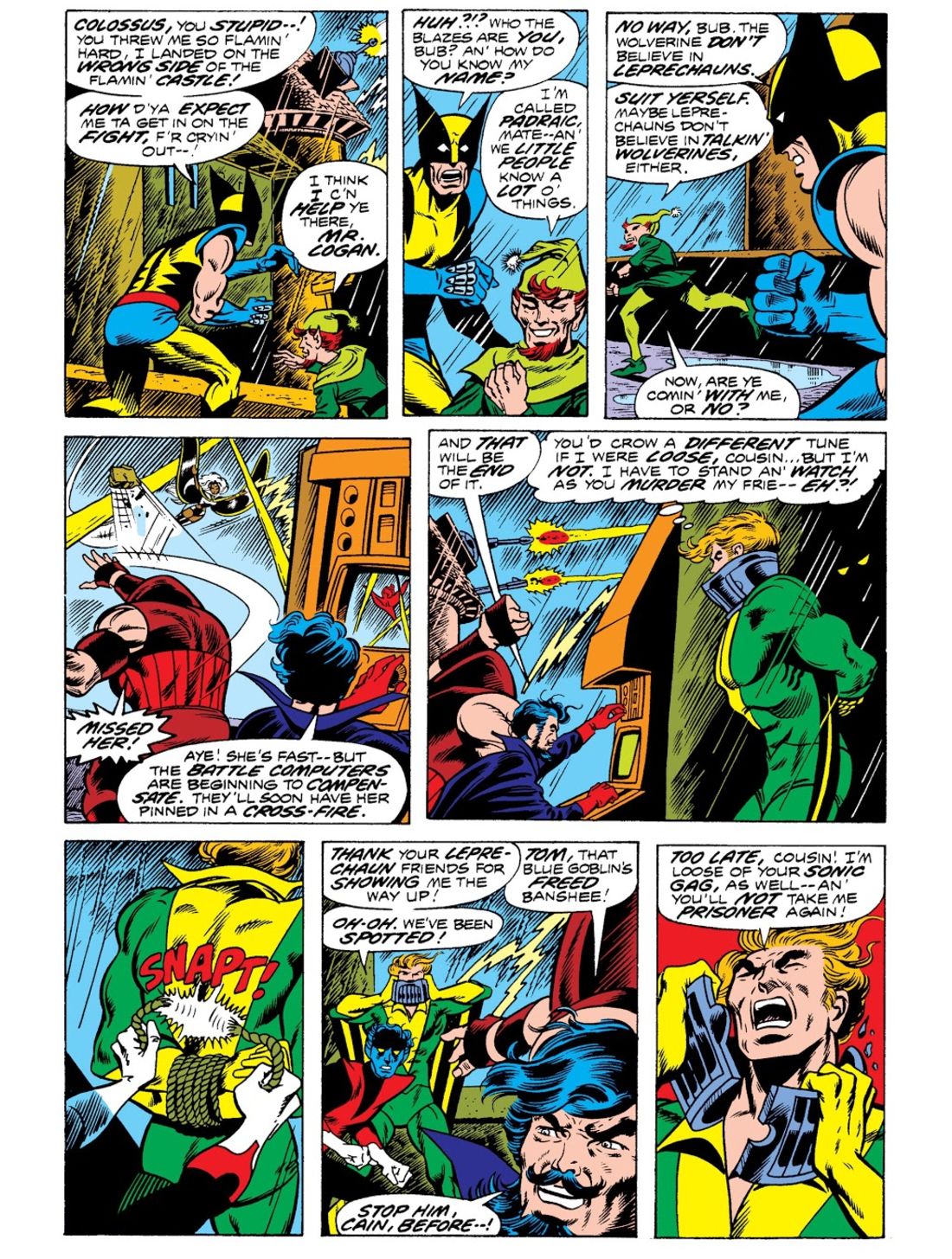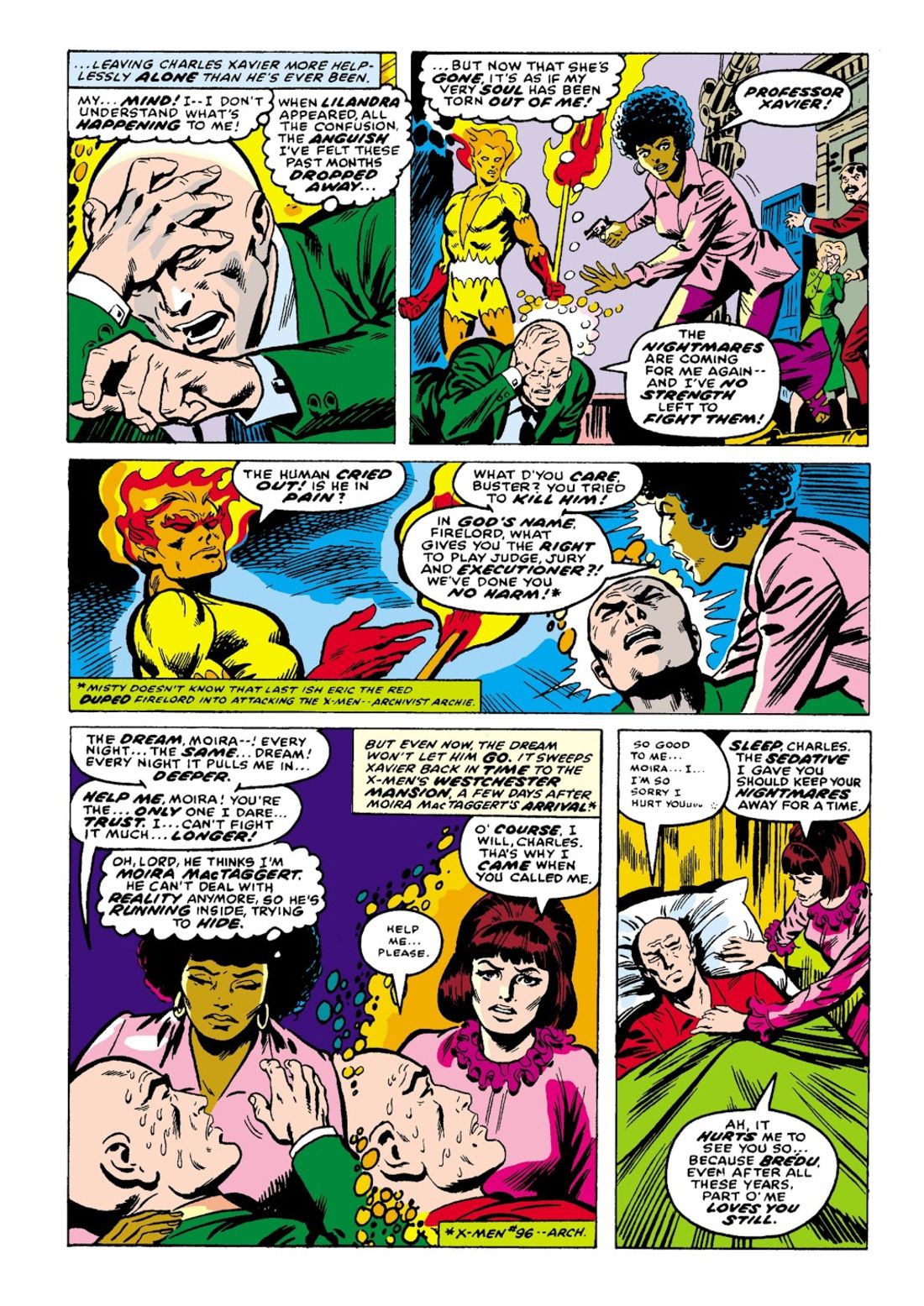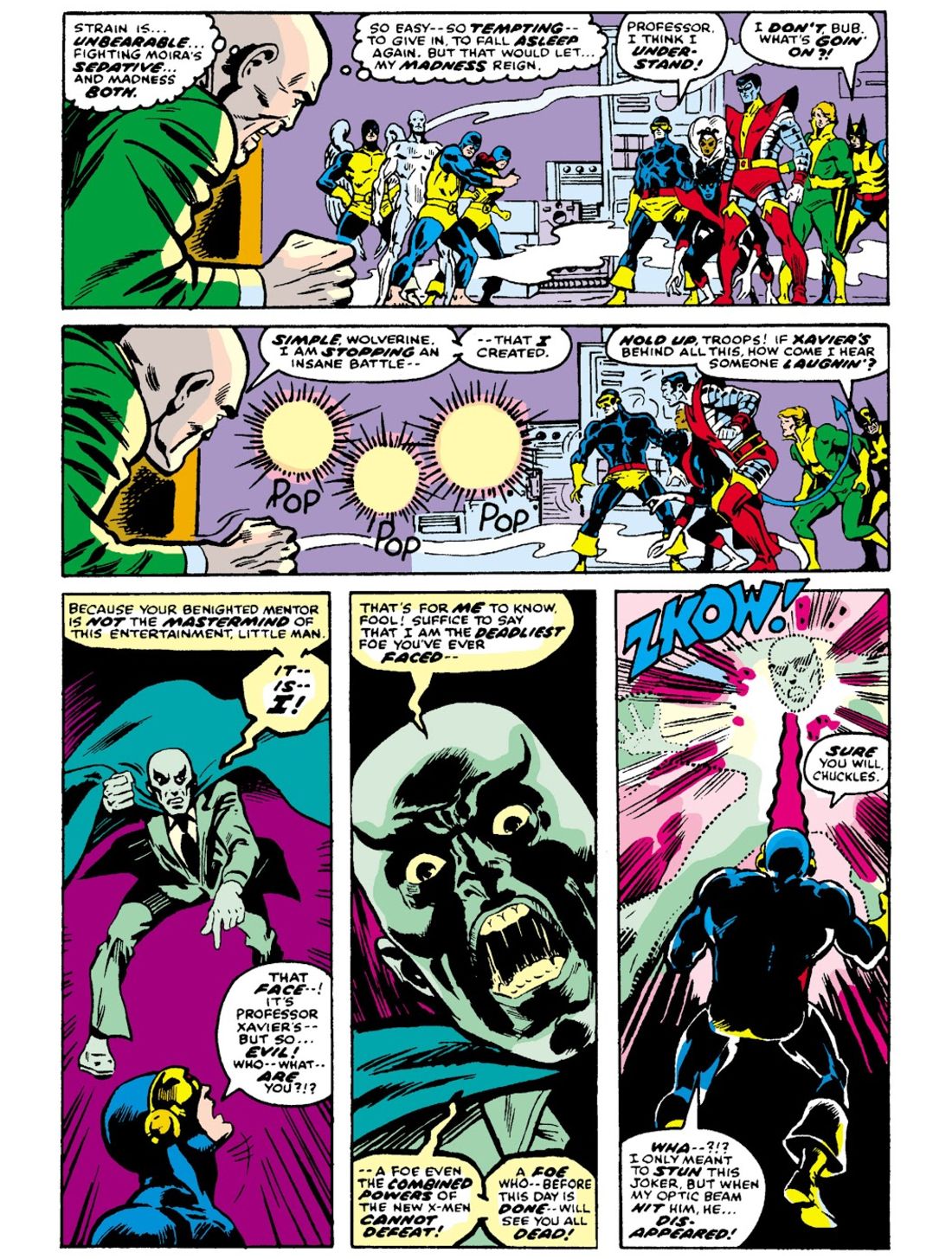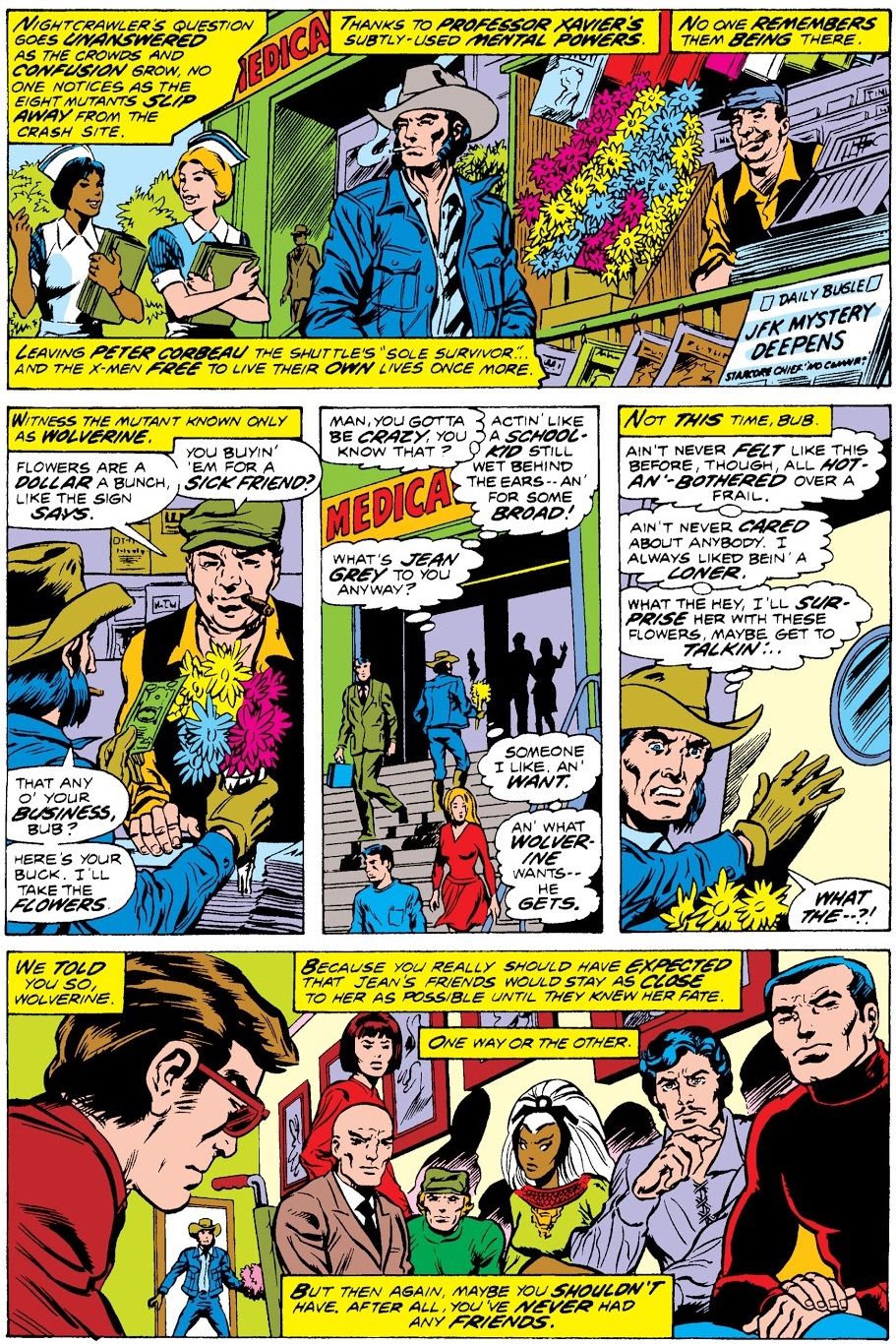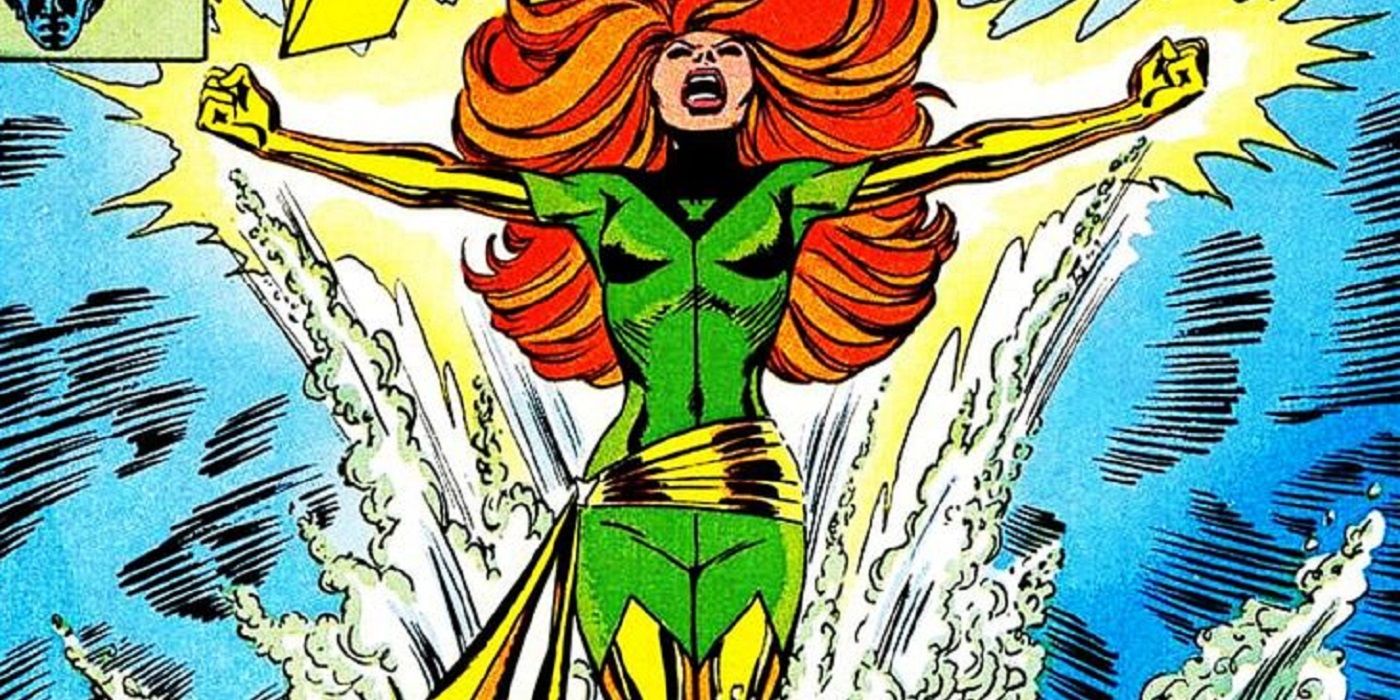Welcome to Adventure(s) Time's seventy-eighth installment, a look at animated heroes of the past. This week, we're returning to X-Men: The Animated Series and its adaptation of the original Phoenix arc. Can the five-part serial translate the epic feel of the original storyline? Are there just too many diversions and continuity points in the comics to work on the small screen?
The previous episode took inspiration from four issues of the Chris Claremont and Dave Cockrum Uncanny X-Men run, borrowing what the producers needed for a twenty-minute intro. This time, inspiration comes from Uncanny X-Men #101 and #106, six issues of the comic! And one major plot element has its origins in a story once viewed as so inconsequential, Marvel avoided reprinting it for decades.
Picking up from the previous cliffhanger, "The Dark Shroud" (written by Mark Edward Edens) opens with the X-Men's shuttle crashing into Jamaica Bay. In a scene translated directly from a famous sequence in #101, Jean Grey emerges from the water wearing a new costume...proclaiming herself "The Phoenix."
The display of her new powers overwhelms Jean. After collapsing, the team takes her to the hospital. (Jean collapsing, and Cyclops constantly ordering Jean "to get down!" have become memes of the series.) As Jean recovers, the X-Men face mystery attackers throughout Manhattan. Gambit exhibits just how broken up he is over by Jean by hitting on a random civilian, by the way.
The source of these attacks? Why, none other than Professor Xavier himself. Anyone introduced to the characters post-2000 in the comics probably does think Xavier is a villain, given Marvel's inept handling of the character. Here, it's meant to be truly shocking.
Eventually, the audience learns the alien scanning for Xavier's mind has broken down his psychic barriers, causing his dark side to emerge. Admittedly, this sequence comes across as filler. It's only tangentially related to the Phoenix plot, and the "evil" design of Xavier is signified by...giving him a cape. A suit, tie, and evil cape. Given the show's affection for Jim Lee's work, it's a shame the artist's "Warlord" design wasn't used.
A very different context in the comics, but it is an established "evil Xavier" look. And it fits the aesthetic of the show. Regardless, the incident prompts Xavier to visit Muir Island for help. Throwing some salt on his wounds, Xavier learns his former flame Moira MacTaggert is dating a handsome mutant named Banshee. And, in a whirlwind closing sequence, Xavier finally encounters the alien Lilandra...and the Juggernaut, who's been hired to kill her.
A fantastic cliffhanger, for both established comics fans and viewers only familiar with the cartoon. And, really, the cartoon didn't have to pull in Banshee and Muir Island. The same story could've been told simply by having Xavier go to his mansion for a nap. (Juggernaut already knows where he lives, as established in an early episode.) But, it's just cool for those familiar with the original stories to see these elements kneaded into the plot. It displays a respect for the source material, and is pretty unobtrusive fan service. (A term that likely didn't even exist at the time.)
Now, if you are versed in the source material, knowing just how the producers pieced all of this together is amusing.
Uncanny X-Men #101 opens with many of the same beats of the episode. The shuttle crash-landing. Jean emerging from Jamaica Bay as Phoenix. (Although sadly the series doesn't bring us her full melodramatic declaration: "Hear me, X-Men! No longer am I the woman you knew! I am fire! And life incarnate! Now and forever -- I am PHOENIX!") A prompt flop back into the water from Jean, then her hospitalization.
The story takes a swerve when, after being told Jean will fully recover, Xavier suggests the X-Men take a vacation. Remember Xavier's response to his strange alien visions in #97 was to...take a vacation. Imagine what the producers must've thought when digging through these issues for material. "Sheesh, how many vacations are these people taking?"
Rather than a visit to Muir Island, the story sends the cast to Cassidy Keep, Banshee's ancestral home. What follows is the return of the Juggernaut, the introduction of Banshee's villainous cousin Black Tom, and...leprechauns.
Not only are the Leprechauns of Cassidy Keep major players for the next few issues, but they also introduce a major aspect of the lore. It's from the Leprechauns that we discover for the first time Wolverine's true name, Logan. (Odd that their mystical knowledge didn't grant them insight into the later Origin miniseries.) It's a silly aspect of the canon. One largely ignored for decades. Not so silly Classic X-Men avoided it, however.
NEXT PAGE: The New X-Men Do Battle With the Old
An early case of Marvel exploiting the team's popularity, Classic X-Men set out to reprint the Chris Claremont run from the beginning. Occasionally, an inventory story from the initial issues viewed as utterly insignificant were skipped. Such is the case of Uncanny X-Men #106 - "Dark Shroud of the Past!"
Following the X-Men's victory in Ireland, they return home to discover Erik the Red lurking in their home. He's now duped another figure, Galactus' former herald Firelord, as a pawn. Simultaneously, Lilandra escapes her pursuers in space, teleporting to Earth and meeting Xavier in person for the first time. This leads into issue #106, which opens with Xavier attempting to reason with Firelord. A psychic attack suddenly hits, reminding Xavier of the pain generated by Lilandra's outer space transmissions.
And from there we go into... a fill-in story! Reportedly, artist Dave Cockrum's intense design work for this serial caught up with him. (Just think, virtually all of the designs we know today from this corner of the Marvel Universe debuted in these few issues.) Unable to meet the issue's deadline, this inventory appeared from the editor's drawer. Claremont and Cockrum did what they could, creating a quickie framing sequence.
Xavier's memories fall back to reveal a previously unrevealed adventure. Creators Bill Mantlo and Bob Brown present a story that likely should've been published after issue #96. The team's just met Moira MacTaggart, the new members are still becoming acquainted, and the loss of Thunderbird remains a raw wound.
The all-new X-Men team abruptly find themselves under attack from the original members. We endure several pages of aimless action, before the big reveal. An exhausted Xavier has accidentally unleashed "The Entity" -- a personification of his darkest thoughts. As we also see in the cartoon, the strain caused by Lilandra's psychic probes creates this evil apparition. The cartoon's also loyal to a fault, representing his rather ridiculous look.
The evil incarnations of the original X-Men are his creations. And, the team's likely to fall before this evil Entity, until Xavier finds the strength to create "good" mental projections of the original team. (As for Firelord, well...be patient. It isn't until issue #108 do we learn Firelord has accepted Xavier's words as truth.)
Reaction to #106 has never been kind. It disrupts the flow of the story, undeniably. And, really, readers just saw the new X-Men facing doppelgangers of their predecessors. It's doubtful any fans thought it'd be one of the stories adapted, however loosely, for the television series.
THE WRAP -UP
CONTINUITY NOTES
Even more seminal X-moments occur during this run of issues. #101 establishes Wolverine's romantic interest in Jean, when he brings flowers to her room. (Not recognizing this concept known as "friendship," that the other X-Men would be there.)
#102 reveals Storm's origin, explaining she was born in Harlem, and later orphaned in Africa during the Suez War. This issue also has Nightcrawler meld into the shadows for the first time. #104 (the Magneto issue not adapted by the show) establishes the team's Blackbird jet, and Muir Island. (Handwaving away the idea Moira's the X-Men's housekeeper.)
I LOVE THE '70s
As Brian Cronin revealed a while back, Dave Cockrum wanted Phoenix to display her new powers against a more famous Marvel figure. In a sign of the times, editorial was reluctant to have a major Marvel hero lose to a g-g-g-irl.
"THE GIRL"
Okay, the briefly evil Xavier with the questionable fashion sense is likely not going to be anyone's highlight from this five-parter. The animated series does have an advantage over the comics, if only because the story's able to appear in its proper slot this time. And the rationale for moving the action over to Muir Island is less tortured in the adaptation.
But the real significance in the comics and the cartoon is the evolution of Jean Grey. The Jean of the comics was traditionally the weakest X-Man. "The girl" to either mother the team, or serve as the object of their desire. Explicitly making her the most powerful member stunned fandom. And, as typical in Claremont's stories, this is not presented as an easy gift. Even in these issues, Jean's questioning if a human should cheat death in such a way. If any human should possess such power.
The animated series treated Jean as a supporting player in the early years. Storytelling and animation restraints prevented the number of team members to appear each week. Jean was deemed as one of the lesser-important figures. Until now. For fans still discovering the world of X-Men, the transformation likely felt as seismic as it did in the '70s.
So that’s all for now. If you have any suggestions for the future, just leave a comment or contact me on Twitter. You can also check out my new comics-themed novel for free at Amazon.

